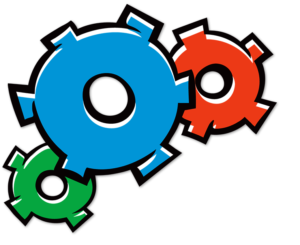Hospitalization
During your visit to the pre-admission clinic, you will receive a time for your child’s operation and a time that they want your child in hospital. It is important to be on time – take into consideration the weather, traffic and parking.
The day of your child’s surgery
The main public parkade is located on 83 Avenue between 112 Street and 114 Street. There is a covered pedway on the fourth level that leads directly into the hospital. Underground parking and meter parking is also available.
Please bring your child to 1C3, the pre-admission clinic. You can leave your child’s bags in the car because your child will not have a room assigned to them yet. You will have time to get these later. Bring a small bag of items that will help keep your child calm or occupied during the wait.
First, staff will ask you to help your child change into a hospital gown or hospital pajamas. Next, medical staff will take your child’s vital signs, like blood pressure and temperature, and administer a pre-medication and a cream on the back of your child’s hands. This cream numbs the skin where the intravenous (IV) needle goes in, so it won’t pinch. You will be allowed to stay with your child right up to the time of surgery until they are taken into the operating room (OR). If your child would like you to come into the operating room with them, ask the anesthetist. When possible, they will try to accommodate. In the OR, medical staff will insert the IV and attach it to a clear bag of saline solution. This will keep your child hydrated and the anesthesiologist will use it to deliver medications to your child before and during surgery. As soon as your child is anesthetized (asleep), staff will escort you out of the OR.
A good time to grab something to eat is immediately after your child has gone into surgery. The best place to wait is outside of the unit that your child is expected to go to after the surgery. There are awaiting areas outside 4D and PICU.
Medical staff will take your child to the recovery room after surgery. Staff in the recovery room will make sure your child is stable, awake and comfortable before they transfer them to the assigned unit.
The Stollery Children’s Hospital has limited private rooms. Most patient rooms have two beds in each. Each patient’s bedside has a single bed for one parent to stay 24 hours per day. There is a TV at each patient’s bedside and a bathroom in each room. Please be considerate of noise level and number of visitors.
Your child may go to the ICE room after surgery, which is a step down from the ICU room, where there is one nurse for every two patients.
Your child may also go to the PICU/NICU after surgery, which is the Pediatric Intensive Care Unit and the Neonatal Intensive Care Unit, respectively. These units most often have a one-to-one patient-to-nurse ratio. There are limitations on the number of visitors in the PICU and NICU, and it is important to call in at the entrance prior to entering.
Important:
- Sometimes children can take a bit of time to wake up in recovery.
- ICE stands for Intermediate Care Environment.
Pain and Pain Medications in Hospital
Managing pain in the hospital is a major priority for the medical team. There are a variety of methods the team can use to make sure your child is comfortable. The two most commonly used methods in neurosurgery are:
- Intravenous route: This method of pain management uses the IV line that medical staff inserted prior to surgery. The anesthesiologist or nursing staff uses it to administer pain medications directly into your child’s vein. Medications like morphine are common and are effective in controlling many types of surgical pain. Pain medications can safely be given as needed or via a continuous drip.
- Oral route: Your child may also take pain medication by mouth if the doctor orders it.
If your child has pain, speak with your nurse. Having your child comfortable is crucial to their recovery.

